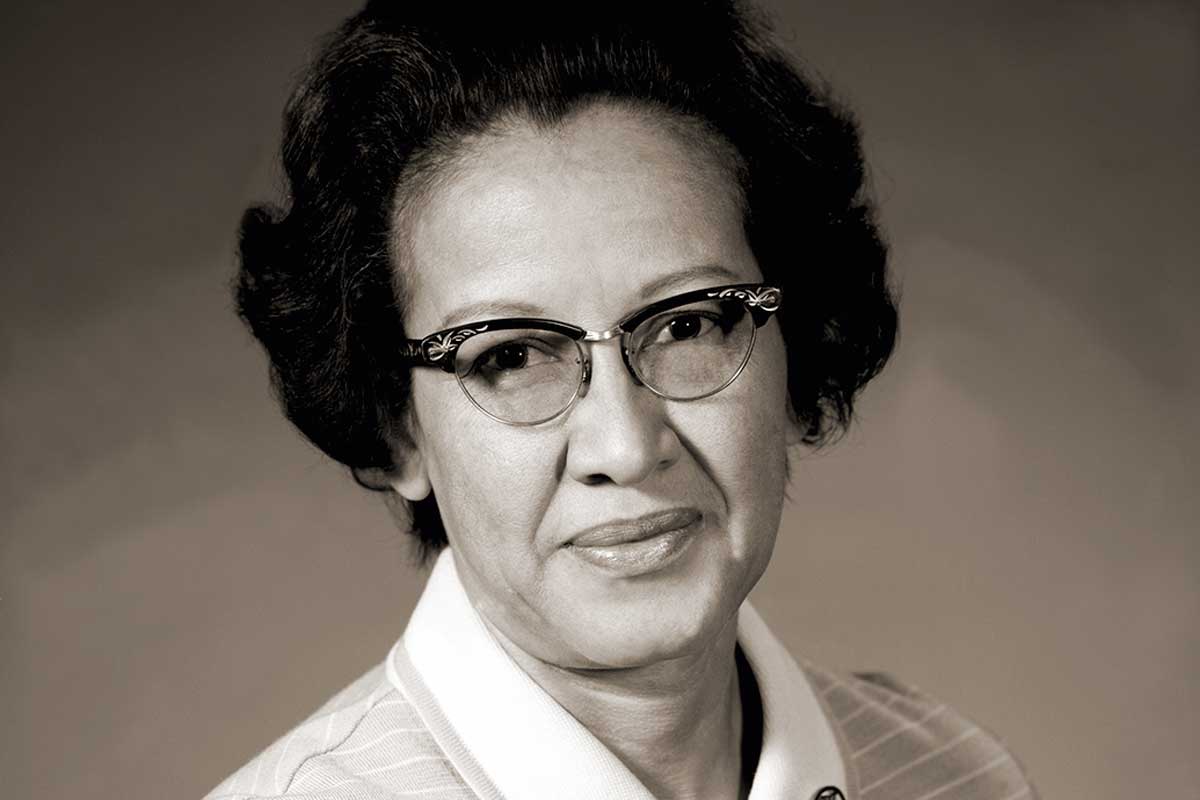
Katherine Johnson was born on 26 August 1918 in White Sulphur Springs (USA). Educated in times of racial segregation and gender discrimination, at age 13 she attended high school on the campus for black students at West Virginia State College. At age 18 she entered college, where she majored in mathematics and proved to be exceptionally gifted. Katherine graduated with top honours in 1937 and began working as a teacher in a public school for black students in Virginia.
In 1939, West Virginia University opened its graduate doors for the first time to three black students: Katherine and two men. She quit her job as a teacher and enrolled in the graduate maths program. However, at the end of the first semester she dropped out of school to get married. When her daughters grew older, she returned to school. But in 1952, jobs were advertised in the computer area of the National Advisory Committee for Aeronautics – NACA, the predecessor of NASA – in an area of the Langley laboratory for black workers. Katherine began working in the summer of 1953 and spent the next four years analysing mathematical calculations from flight tests.
The launch of the Soviet satellite Sputnik in 1957 changed Katherine Johnson’s life. That year, Katherine provided the mathematical support for the Notes on space technology (1958), produced by engineers from the Flight Research Division and the Unmanned Aircraft Research Division. The engineers of these groups formed the core of the Space Task Group, NASA’s first official venture into space travel. Katherine was commissioned to do trajectory analysis for Alan Shepard’s Freedom 7 mission in 1961, the first human space trip made in the USA. In 1960, she and engineer Ted Skopinski calculated the equations that describe an orbital space flight and specified the ship’s landing position. This was the first time a woman from the Research Division was credited as the author of a research report.
«Katherine Johnson was the first woman of NASA’s Research Division to be credited as the author of a report»
In 1962, when NASA was preparing for John Glenn’s orbital mission, Katherine Johnson did the work that would make her most famous. The complexity of the orbital flight required the construction of a global communications network linking tracking stations to IBM computers in Washington, Cape Canaveral, and Bermuda. The computers had been programmed with the orbital equations that would control the capsule’s trajectory on Glenn’s mission, Friendship 7, but the astronaut was reluctant to risk his life on the electronic calculation of machines that could break down. Glenn asked Katherine Johnson to perform the same calculations as the computer-programmed equations. Katherine had to do it by hand with a mechanical calculation machine. The astronaut said: «have the girl check the numbers and if she’s good, I’m ready to fly». Glenn’s flight was a success and marked a turning point in the space race between the United States and the Soviet Union.
When asked what her greatest contribution to space exploration was, Katherine Johnson mentioned the calculations that helped synchronise the Apollo project’s Lunar Lander with the command and service module orbiting the moon. She retired in 1986 after thirty-three years at Langley. In 2015, at the age of 97, Katherine Johnson received the Presidential Medal of Freedom from President Obama, the highest civilian honour in the United States. It was the crowning achievement of someone who had to overcome unjust obstacles imposed on her because she was a woman and a black woman.





